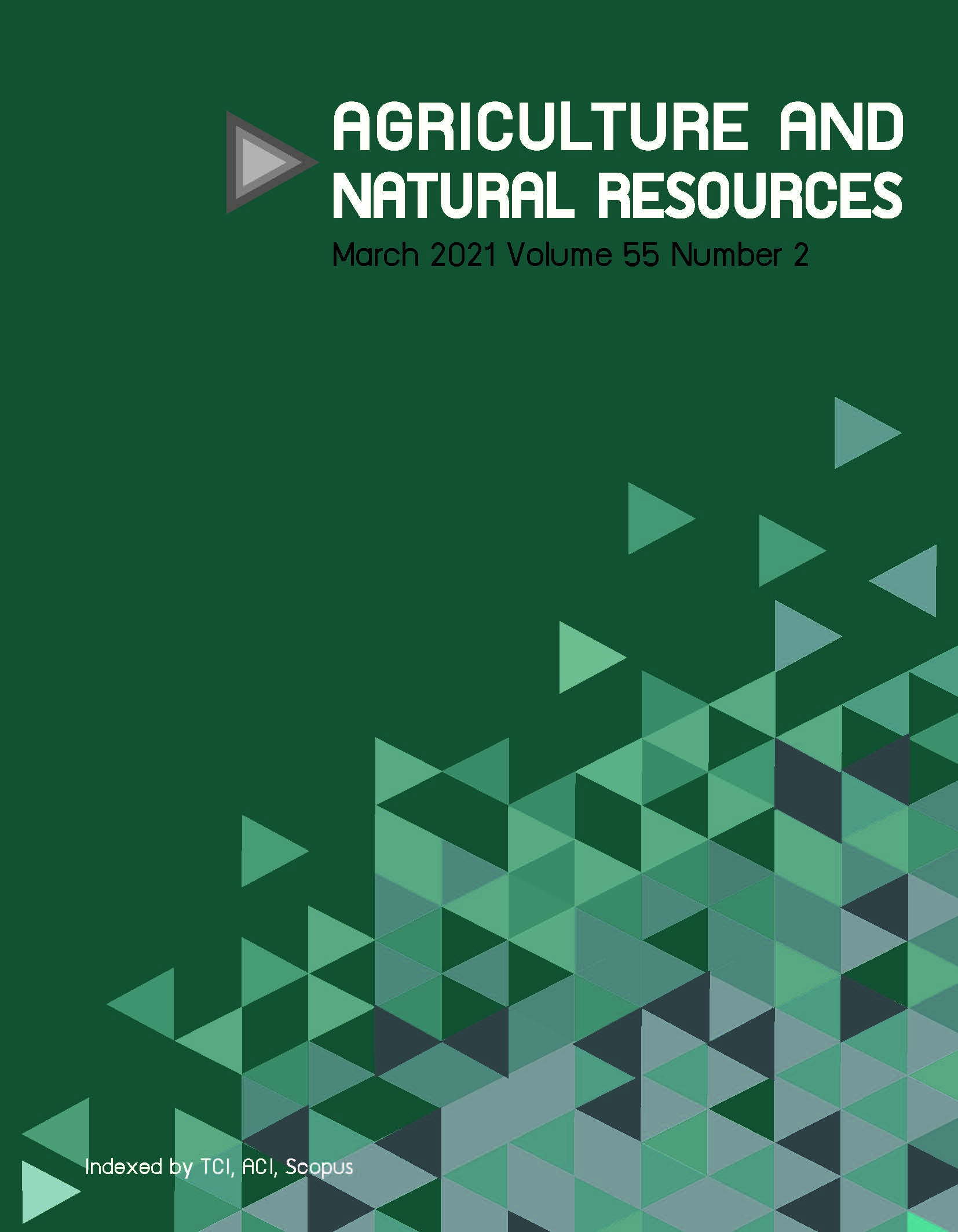Periodic growth of Afzelia xylocarpa (Kurz) Craib and Lagerstroemia duperreana Pierre ex Gagnep. and their responses to climatic variability
Keywords:
Annual ring, Cambial marking, Dendrochronology, Leaf phenology, Wood anatomyAbstract
The growth response to climatic variability was studied of Afzelia xylocarpa and Lagerstroemia duperreana growing naturally at the Sakaerat Environmental Research Station, Thailand. The monthly wood increments and leaf phenology of these two species were investigated for 1 yr. The occurrence of axial parenchyma was considered as a marker for the annual ring boundary in A. xylocarpa, while the variations in vessel size and fiber cell wall thickness and shape were used to identify the annual ring boundary in L. duperreana. The monthly wood increments and leaf flush in these trees were initiated at the onset of the rainy season or a month later. The cessation of wood increment occurred in association with leaf abscission during the dry season, from December to February. The two climatic components indicated by principal component analysis were Moisture (rainfall, relative humidity and soil moisture content) and Temperature (maximum, minimum and mean temperature); they illustrated the coupling effect of direct and indirect stimulation on tree growth. By using path analysis, the Moisture and Temperature components could be used to explain the occurrence of mature dark green leaves (MDL) 64% of the time in A. xylocarpa, while the moisture component alone could be used to identify 41% of the MDL occurrence in L. duperreana. Climatic components association with MDL could explain 45% and 67% of the formation of woody cells in these two tree species, respectively. The association of climatic components, MDL and wood increments induced 46% and 91% variation in the diameter over bark of A. xylocarpa and L. duperreana, respectively.
Downloads
Published
How to Cite
Issue
Section
License

This work is licensed under a Creative Commons Attribution-NonCommercial-NoDerivatives 4.0 International License.
online 2452-316X print 2468-1458/Copyright © 2022. This is an open access article under the CC BY-NC-ND license (http://creativecommons.org/licenses/by-nc-nd/4.0/),
production and hosting by Kasetsart University of Research and Development Institute on behalf of Kasetsart University.







